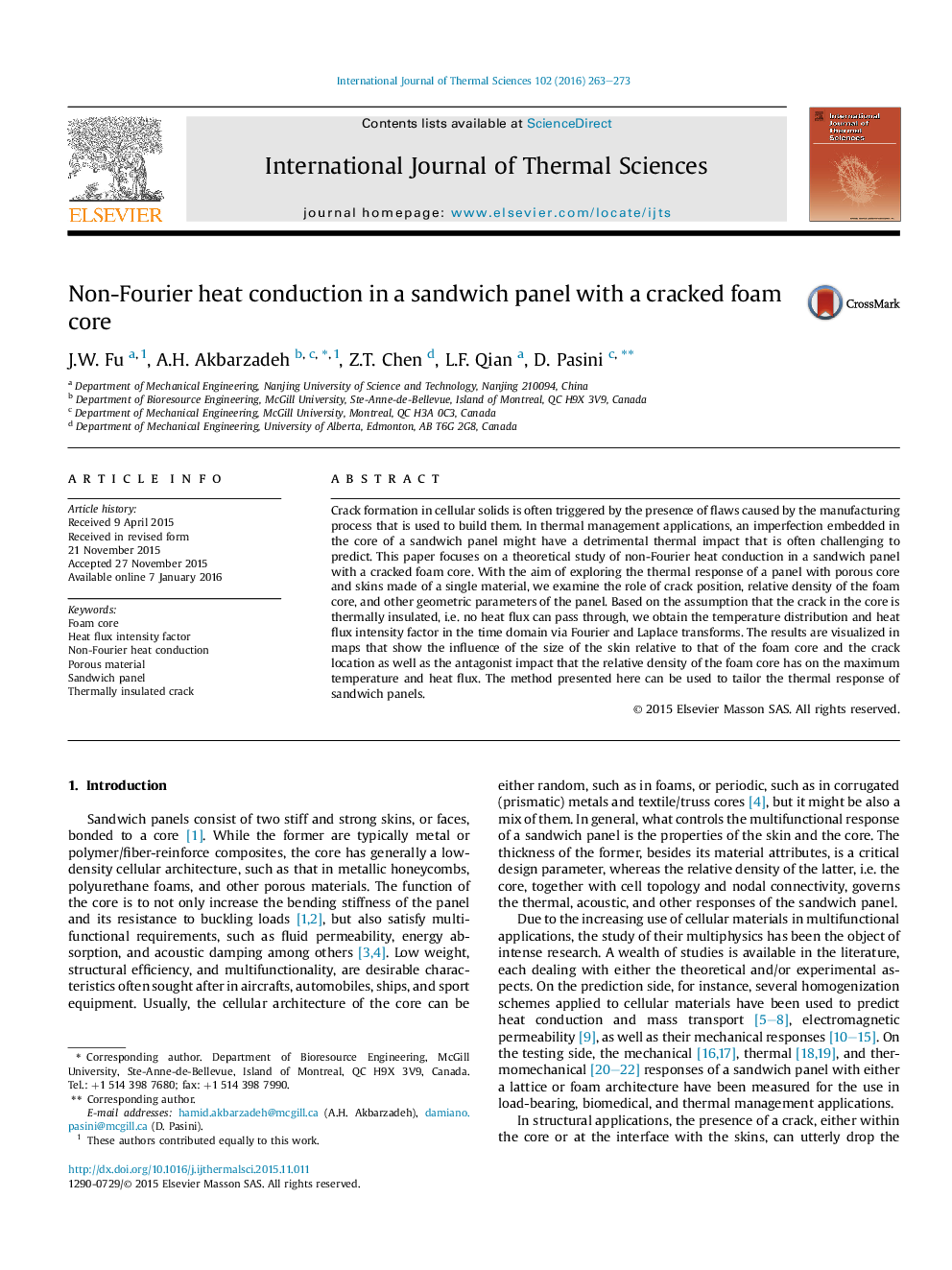| Article ID | Journal | Published Year | Pages | File Type |
|---|---|---|---|---|
| 667960 | International Journal of Thermal Sciences | 2016 | 11 Pages |
•This paper focuses on non-Fourier heat conduction in a sandwich panel with a cracked foam core.•The role of crack position, relative density, and other geometric parameters are examined.•Temperature distribution and heat flux intensity factor in the time domain are obtained.•The results show the antagonist impact of relative density on the maximum temperature and the heat flux.•The method can be used to tailor the thermal response of a sandwich panel for thermal management.
Crack formation in cellular solids is often triggered by the presence of flaws caused by the manufacturing process that is used to build them. In thermal management applications, an imperfection embedded in the core of a sandwich panel might have a detrimental thermal impact that is often challenging to predict. This paper focuses on a theoretical study of non-Fourier heat conduction in a sandwich panel with a cracked foam core. With the aim of exploring the thermal response of a panel with porous core and skins made of a single material, we examine the role of crack position, relative density of the foam core, and other geometric parameters of the panel. Based on the assumption that the crack in the core is thermally insulated, i.e. no heat flux can pass through, we obtain the temperature distribution and heat flux intensity factor in the time domain via Fourier and Laplace transforms. The results are visualized in maps that show the influence of the size of the skin relative to that of the foam core and the crack location as well as the antagonist impact that the relative density of the foam core has on the maximum temperature and heat flux. The method presented here can be used to tailor the thermal response of sandwich panels.
Graphical abstractFigure optionsDownload full-size imageDownload as PowerPoint slide
